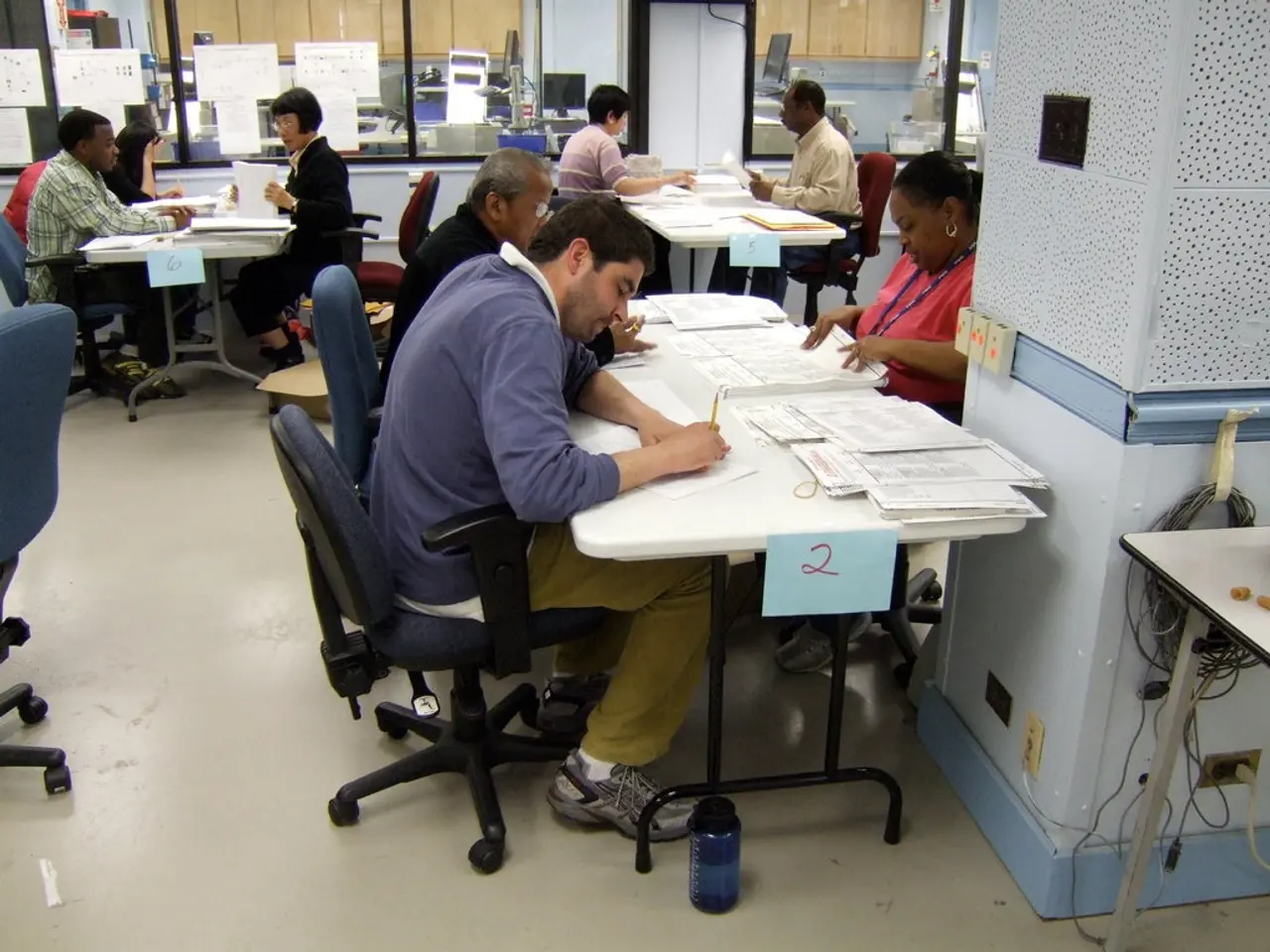Enhancing Concentration for Better Memory: Techniques for Concentrated Work and Increased Efficiency
In today's digital age, distractions can be a significant hindrance to productivity and focus. However, there are several strategies that can help reduce these interruptions and improve working memory and selective attention.
Firstly, turning off non-essential notifications can significantly reduce interruptions. This simple action allows you to focus on your tasks without constant disruptions.
Identifying apps or websites that frequently divert your attention is also crucial. By limiting access to these distractions, you can minimise the cognitive load caused by irrelevant stimuli, thereby enhancing your ability to concentrate.
Creating a well-organised workspace can also minimise distractions. Removing unnecessary items from your desk and keeping only essential supplies within reach can help maintain a clutter-free environment, which in turn, can help improve focus.
For individuals with ADHD, listening to music while studying can increase focus, as long as it doesn't become a distraction. Instrumental music is typically recommended for this purpose.
Minimising distractions improves working memory and productivity by allowing the brain to allocate more cognitive resources to the task at hand. This focused attention aids the brain’s ability to encode, retain, and manipulate information in working memory more effectively, leading to better task performance and fewer errors.
Working memory and selective attention share cognitive resources; distractions interfere by forcing the brain to inhibit irrelevant inputs, which increases cognitive load and reduces memory precision. By reducing distractions, the brain expends less effort filtering out irrelevant information, allowing working memory to operate with greater precision and efficiency.
Furthermore, minimising distractions prevents the harmful effects of multitasking, such as frequent task-switching costs, which degrade focus and slow productivity. Single-tasking or focused work blocks enhance the brain’s sustained attention capacity, reducing errors and mental fatigue while improving the quality and speed of work completed.
Practical methods to minimise distractions include scheduling dedicated ‘focus time’ free of interruptions, using digital tools to block notifications, and cultivating mindfulness through meditation to strengthen concentration and self-regulation. Experimenting and finding the strategies that work for you can help minimise or limit distractions.
Moreover, prioritising tasks by creating a daily or weekly to-do list can help keep you on track and minimise wandering thoughts. The Pomodoro Technique, where you work for 25 minutes and then take a 5-minute break, is another effective time management strategy.
Digital distractions can derail productivity, but using organisers, trays, or labels can maintain order in your workspace. Additionally, creating zones for different activities helps associate specific tasks with designated spaces. Using tools like website blockers can limit access to distracting websites during work hours.
For those seeking to improve their executive function skills, a membership for women is available. This membership provides resources and support to help individuals manage their time, organise their workspace, and boost their productivity.
In summary, reducing distractions enhances working memory by lowering cognitive load and supporting selective attention, which together improve concentration, reduce errors, and increase productivity and task efficiency. By implementing these strategies, you can create a more focused and productive work environment.
- To combat distractions and improve time management, consider turning off non-essential notifications and limiting access to frequently distracting apps or websites.
- A well-organized workspace can aid focus by minimizing clutter and distractions, so removing unnecessary items and keeping essential supplies within reach is recommended.
- For individuals with ADHD, instrumental music can be beneficial for increasing focus when studying, as long as it does not become a distraction itself.
- By minimizing distractions, working memory and productivity improve as the brain can allocate more cognitive resources to the task at hand, resulting in better task performance and reduced errors.
- Prioritizing tasks by creating a daily or weekly to-do list or using techniques like the Pomodoro Technique can help keep you focused and minimize wandering thoughts.
- Improving executive function skills is possible with resources available through memberships designed specifically for women, which offer tools for time management, workspace organization, and productivity enhancement.
- Adopting practical methods such as scheduling focus time, using digital tools to block notifications, and practicing mindfulness can help minimize distractions and enhance personal growth, career development, and skills training.




